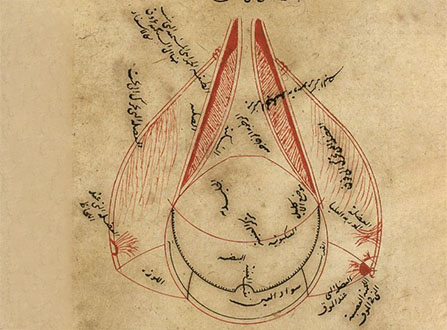Medicine in Islam
Medicine was one of the areas in which Islamic thinkers were most inspired by the earlier classical and Hellenistic traditions. This inspiration, largely the result of the massive project of translating Greek heritage into Arabic in the ninth and tenth centuries, impacted the development of numerous disciplines, including philosophy, history, pharmacology, anatomy, and, of course, the diagnosis and treatment of disease.
Works attributed to mythological figures such as Asclepius and Hermes Trismegistus were translated and copied along with those by the historical physicians Hippocrates (460-370 BCE) and Dioscorides (40-90 CE). However, Galen (129-200 CE) was the unquestioned Greek authority in Islamic medical literature, the physician par excellence; while Galen’s own writings were sometimes contradictory, Islamic thinkers systematized and developed his thought. The Galenic theory of the four humors—yellow bile, black bile, phlegm, and blood—served as the theoretical basis for these later works.
The most famous formulation of the Galenic system was the Canon of Medicine, written by the philosopher and physician Avicenna (Ibn Sīnā, 980-1034). Itself widely translated and studied, the Canon became the principal medical textbook in Europe as well as the Middle East up until modernity.
The Islamic ecumene was also, of course, bordered by the civilizations of India and China, which had their own well-developed medical traditions. In fact, in the eighth and ninth centuries, Indian medical traditions were translated from Sanskrit into Arabic, just like Greek works. It seems that these Indian traditions failed to take hold not on their own account but for reasons of court politics: the main patrons of Indian medicine lost favor with the Abbasid rulers just as the translation movement was at its height.
The encounter with Chinese methods in the thirteenth century came too late to influence the theoretical underpinning of Islamic medicine, which at that point had already solidified. However, rhubarb from China, sugarcane from India, nutmeg from Indonesia, and other material medica, encountered as the Islamic world expanded to the east, were used and incorporated as new drugs within the existing Galenic medical system.




